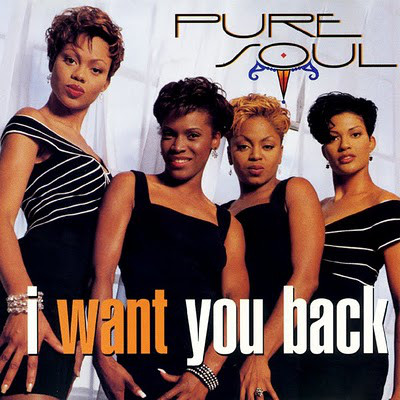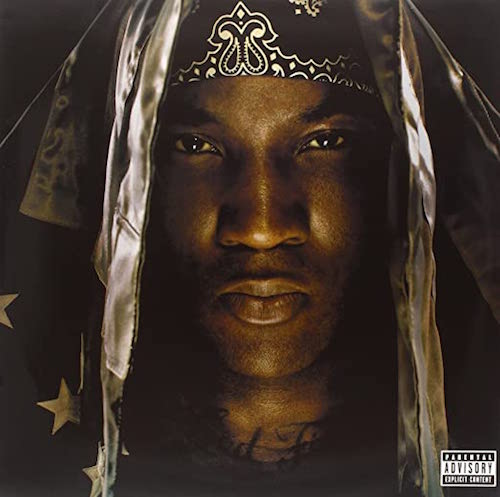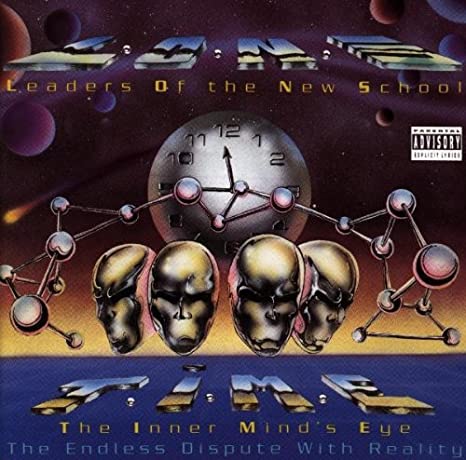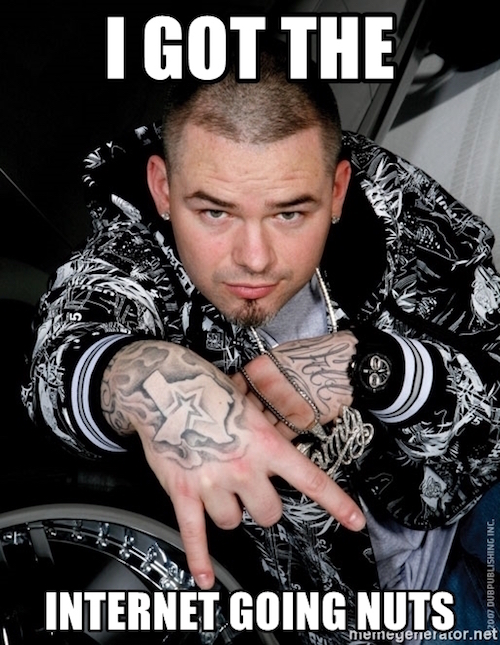What Happened to R&B? 4 Reasons It Failed and How We Can Revive It

Here at Soul In Stereo, y’all know I’ve spent more than a decade covering both hip-hop and R&B. As with all things, music evolves.
That said, the past decade has been a tough time to be an R&B fan. It seems that as rap has reached atmospheric heights, the once mighty genre of R&B continues to slide – in both popularity and quality.
But what happened?
I know it’s easy to place the blame on one sound or one person.

But that’s not at all fair.
If you want to know the roots of what ails R&B, hop in the Delorean and travel back in time with me to the year 2008 or so. It’s here where you can find the cataclysmic shift that rocked R&B as we knew it and how we can resurrect the vocals, storytelling and emotion that has been a hallmark of soul.
Da Recession

You think Rona’s got your money funny now? Well, 2008 wasn’t a game. During the economic collapse of 2008/2009 80 percent of school districts experienced budget cuts. In many schools, the biggest victims of those cuts were music and arts programs, erroneously seen by many administrators as “disposable.”
What does that have to do with R&B, you ask?
Well, if you’re familiar with my What Ever Happened to series, where we look back at the careers of some of R&B’s biggest legends, most of them didn’t have the resources for formal training. Instead, they honed their skills in one of two places – church or school choirs.
Vocal inflections. Harmonizing. Riffs and runs. These important elements were taught in those humble training grounds.
Unfortunately, those outlets were greatly reduced by the 2010s, with many young vocalists simply relying on raw talent or mimicking their favorite singers without proper context or understanding. Add to that sad fact that vocal coaching seems to be an unnecessary luxury among some labels and it’s clear that many of today’s biggest stars are basically learning to sing on the job.
And no, I ain’t naming names. Just listen to some of today’s “hits” – lord knows your ears will tell you. What’s more important is that the building blocks of R&B excellence were no longer being cultivated at a young age.
What’s even more curious – and, honestly, quite sad – is that R&B excellence has essentially taken a backseat due to the dominance of its much more popular play cousin.
The rise of hip-hop

Hip-hop and R&B have always been joined at the hip. Going way back to hip-hop’s origins in the 70s, DJs would often play the percussive breaks in funk and soul records for MCs to rhyme over, essentially creating the blueprint that rap follows today. Over time that influence grew, with Chaka Khan and Melle Mel teaming up for what is widely recognized as the first R&B/hip-hop collabo on 1979’s “I Feel for You,” to the advent of hip-hop soul blending production sounds in early 90s.
By the end of the 2000s, the lines began to blur even more. Spurred on by the recent success of T-Pain, hip-hop artists began using vocal sweeting to record their own vocals. The biggest players of the era essentially became singers in their own right – from Kayne West’s 808s & Heartbreak album to rising megastar Lil Wayne crooning over pretty much everything.
Singing was no longer seen as a unique talent reserved for elite vocalists, it was basically a production effect anyone could do with the right tools. That DIY mentality may be good for efficiency, not so much for quality.
By 2017 hip-hop officially surpassed rock as the most popular genre in the US, meaning that rap officially was writing the rules for music.
Those rules basically said pristine vocals don’t matter anymore.
The new school

I’ve often said that every 10 years or so, the musical audience turns over, with new fans being introduced to each genre. That was readily apparent at the turn of 2010, with lots of new artists simultaneously emerging at the time as well:
Lil Wayne’s scattershot, stream of consciousness flow.
The Weeknd’s moody and, ahem, “vibey” production
Drake’s sing-songy, radio-friendly cadence
And, of course, the Migos and Future’s trap styling that seemed to dominate nearly every station.
For previous generations of music fans, we’ve seen change before – this was nothing new. Many assumed this would be yet another fad that would eventually run its course before a new style took over. We saw it with crunk, we saw it hyphy, we saw it with New Jack Swing, disco, Miami bass and countless more.
But what made this era different is that with hip-hop’s rising dominance, labels took notice and devised a game plan.
From production to cadence to song length, they took what worked in this era and devised a fool-proof formula for success. It’s a plug and play scenario – any artist could be dropped into this format for a quick and easy hit.
Where did that leave R&B? Struggling to catch up.
As eyes and ears began to pull away from traditional R&B sounds, both R&B veterans and young neophytes, quickly reformatted themselves in an effort to remain relevant.
In order to stay current, you had to sound current.
Those sounds? Electronic, pitchy vocals; dark, brooding beats; rap-like cadences in the place of traditional harmonies.
And for that new generation of fans we mentioned earlier? These sounds were not a passing fad, this was how music was SUPPOSED to sound because, basically, it was all they knew. Traditional R&B was slowly phased off of playlists as some of R&B’s biggest stars – including Usher, Beyonce, Trey Songz, Chris Brown and embraced trap to maintain relevance. Your favorite singers are now your little sister’s favorite rappers.
For a whole generation of fans, auto-tuned crooning BECAME R&B.
And let me let you in on a secret: Young ears make the music world go ‘round.
The Internet Goin Nutz

There’s one other big thing that occurred at the turn of the previous decade – and if you’re reading this post, you obviously know what that is.
The rise of social media, a medium dominated by young fanbases that, quite frankly, haven’t been properly exposed to the R&B we know and love.
In the span of just a few years, culture has shifted at a blinding speed, with R&B one of its casualties.
I won’t go into my issues with charting streaming sales of albums – I still don’t understand how A Boogie Wit Da Hoodie can barely sell 800 copies of his album yet top the Billboard charts – but we can talk about the power of social media and how traditional R&B simply doesn’t have the level of support it deserves online.
Just before I published this post, Sada Baby’s remix with Nicki Minaj absolutely exploded onto the charts, all thanks to Nicki’s ravenous fanbase pushing streams online. I won’t get into my usual gripes about that woman’s radioactive fandom but I’ll say this for the Barbz – in an era where music promo has all but dried up, they have mastered generating buzz.
So yes, while Forbes can write about The Weeknd’s most recent album scoring the largest streaming week ever for an R&B release like it’s a huge win for the genre, traditional R&B singers who have been edged out simply don’t have the type of online pull that today’s viral stars enjoy.
That means the harmonizing, the runs, the vocals that once defined the once-mighty genre are essentially being muted.
If a tree falls in the woods and no one is there to hear it, does it make a sound? If an incredible R&B singer drops an album yet doesn’t get the push it deserves, does it even exist?
In the ears of the world at large, it doesn’t.
The Fix

So playas, what have we learned?
When it comes down to it, R&B as we knew it has been phased out. Young artists with raw talent aren’t receiving the training they need to become better. Pristine vocals are seen as passe when your favorite rapper can pretty much do them with a computer program. The talented singers we do have left just aren’t receiving the exposure their hip-hop-leaning peers receive. And young audiences haven’t been exposed to enough good R&B to differentiate good from the bad.
BUT THERE’S HOPE I PROMISE.
The answer lies with you.
I know, I know, I miss the days when you could turn on the TV and be presented with great R&B, served up on a silver platter held by Donnie Simpson and Sherry Carter. But those days are long gone.
If you want better vocals, if you want better songwriting, if you want more mature themes, simply support it and the artists who create it.
After leaning on hip-hop for years (with diminishing results with each album), Trey Songz recently dropped Back Home, his best album in years. As of this post, it’s projected to be the first time his album doesn’t make the top 20. It feels like he’s being punished for returning to the sound that made him a star. It’s unfair.
Let’s be frank – younger audiences won’t support an album that doesn’t sound like what they’re used to. Also, the industry hates risks, they aren’t going out of their way to push a project that runs counter to the current sound.
So that means it’s up to fans to stream, to spread word and to buy tickets (when COVID goes away – and wear a mask too, you weirdos). When we get the numbers to shift, true talent will once again become fashionable and the industry will be forced to change direction.
YOU are the change in R&B you seek.
If you’re reading this on Soul In Stereo, ignorance is no excuse – celebrating talented artists is what we do.
Ledisi. Chloe X Halle. Toni Braxton. Victoria Monet. Shawn Stockman. Kiana Lede. Ro James. John Legend. Luke James. DVSN. 112. PJ Morton. Jojo. Anna Moore. Kevin Ross. And yes, Trey Songz.
Those names are among the best R&B offerings of 2020 so far. Most of them didn’t receive a fraction of the hype they deserved. But if we want to keep R&B alive, they deserve our support.
So no, you can’t place the downfall of R&B on one person or thing. But you can definitely place it’s revival on one person – you.

Thissss… I was listening to Brandy’s full moon today.. made me realise how much harmonizing and sweet vocals have died in current R&B… We really need to support these R&B artists out here doing the most
Will Southern Soul music be the new R&B. If not why?
Such a great read! Everything is cyclical though. We’ll get back to where we need to be!
I miss it so much!
Collabs. Unearth background vocals and bridges. Reassemble Groups again. Better music videos (though they no longer drive the product). ‘Live’ Musicianship (stage & studio). Combine older producers with younger writers. More diverse vocal arrangements. Sing about whatever, but write with quality control and value in mind. When 11 out of 14 tracks are going to relate to Drugs, Substance Abuse, Sex, Cheating and other carelessness. I would suggest revisiting mainstream classic rock acts–so many did a lot of that in and out of the music…and, in more instances than not, still managed to appeal to masses.
I cant believe your bigging up mysogynistic ass Trey Songz… I usually agree with you but NO. Hes super disrespectful and only talks about sex. When that white girl said he sexually assaulted her he came out with a whole family and this album.
Yeah… Im not jacking him… as we say in NY….
Oh I’m not defending any of that or dismissing allegations. Only talking about music quality.
I think you hit the nail on the head.1 thing you forgot Record labels are the ones who pushed Hip-hop way too much they left the other music genres high and dry.Now it’s all that water down mumble B.S you year on the radio.If we would just take control of our music and not have to depend on higher-ups to play our stuff.We need to learn from other people and genres.Theres a kid who still listening to Michael Jackson and my driver still plays Queen AC/DC and Journey.So alot has to depend on the public if we want good music just turn the radio off completely and then maybe we could see a new resurgence.